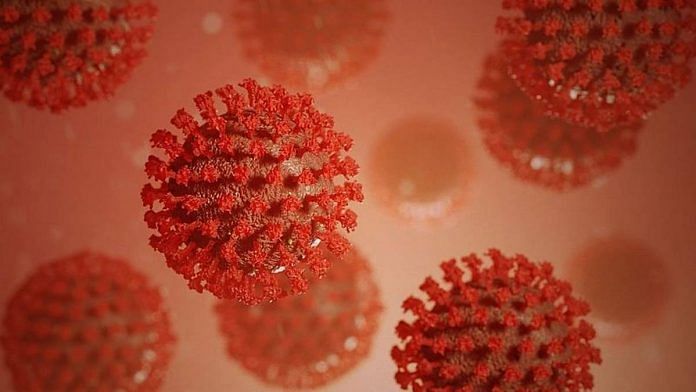New Delhi: After the scare cause by the XE strain of the SARS-CoV-2 virus — first reported in Mumbai earlier this month — reports now suggest that a new sub-lineage of the Omicron variant, designated BA.2.12.1, may be behind the renewed surge in Covid cases in New Delhi.
Incidentally, data uploaded from India on GISAID — a global, open access genomic database of viruses — shows that the variant was already present in the population during the country’s last Omicron wave.
At least 11 samples of the BA.2.12.1 lineage were collected and sequenced from India between December 2021 and February 2022, according to data available on GISAID. Of these nine were collected from Rajasthan, while two were from Telangana
BA.2.12.1, along with its sister lineage BA.2.12 , was reported to be behind the surge in Covid cases in the US this month. Now, media reports suggest that the same lineages maybe behind the increase in infections in Delhi.
On Thursday, Delhi reported 965 new cases of Covid. The city’s R rose to over two this week, driving up the overall infection rate for India.
ThePrint looks at how these Omicron sub-lineages were created and what makes them more contagious than the original variant.
Also read: What is mucosal immunity & how nasal sprays and vaccines will help fight Covid-19
What is a genetic mutation?
Every living organism is run by a predefined set of genes that ‘instruct’ cells how to build proteins. Understanding the sequence of genes is thus like cracking the code to the organism and how it functions.
The genetic material of the coronavirus is ribonucleic acid (RNA) strands. Each virus has about 26,000 to 32,000 bases or RNA “letters” in its length.
These letters — A, C, U and G — stand for adenine, cytosine, uracil and guanine, nitrogen-containing biological molecules that are the fundamental units of the genetic code. How A, C, U and G are arranged in the genetic code determines what proteins the organism has.
When a virus multiplies inside the cells of a living organism, it creates copies of the RNA. However, the process it uses to make these copies often introduces ‘typos’. These errors are called genetic mutations.
Mutations that do not help the survival of the virus eventually get eliminated, while others keep getting copied in the next generation of the virus.
Omicron’s lineages
In the early days of Omicron, the variant diverged into two lineages — BA.1 and BA.2 — and the latter predominated the spread across the world.
Now these lineages are evolving further. ThePrint spoke to a leading genomic expert, who did not wish to be named, to better understand this genetic variations in the virus.
While BA.2.12 only has an additional mutation called S704L on its spike protein, the BA.2.12.1 has additional spike protein mutations called S704L and L452Q.
Spike protein are the protrusions seen on the outer surface of the novel coronavirus.
It is not clear why these variants did not dominate the Indian population during the last Omicron wave despite having higher growth advantage than the parent BA.2 variant.
The genomic expert explained to ThePrint that the widespread Omicron infections at the the time may have conferred immediate protective immunity to the population, preventing the spread of these variants during the early months of 2022.
However, as anitbodies begin waning after three months, these variants may have gotten the opportunity to spread once again.
Mutations in the L452 position of the spike protein — which is part of the receptor binding domain (RBD) — have been previously reported in a number of other variants, including Delta, Epsilon and Lambda.
The RBD is a key part of the coronavirus, located on its ‘spike’ protein that allows it to latch on to the cell’s receptors and gain entry, leading to infection.
A similar mutation (at the L452 position of the spike protein), L452R, is also seen in Omicron’s BA.4 and BA.5 lineages, and is presently reportedly increasing in numbers in South Africa.
Early estimates from data in the US suggest that the BA.2.12.1 may have significantly increased growth advantage over the parent Omicron lineage.
It is not clear how the L452Q mutation confers the growth advantage in BA.2.12.1.
Studies so far do not suggest mutations in the L452Q to be significantly involved with the ability of the virus to evade antibodies. However, some scientists have suggested that the L452 position of the spike protein is critical for binding to the human receptors, and thus L452Q mutation could potentially enhance the transmissibility of the virus.
So far, there is no evidence to show that these sublineages increase the disease severity among patients. However, non-pharmaceutical interventions — such as wearing masks and avoiding large gatherings in closed spaces — are effective in preventing Covid irrespective of the variants.
(Edited by Poulomi Banerjee)
Also read: Study on mice shows Covid virus leads to brain neuron death, higher anxiety, reduced cognition



